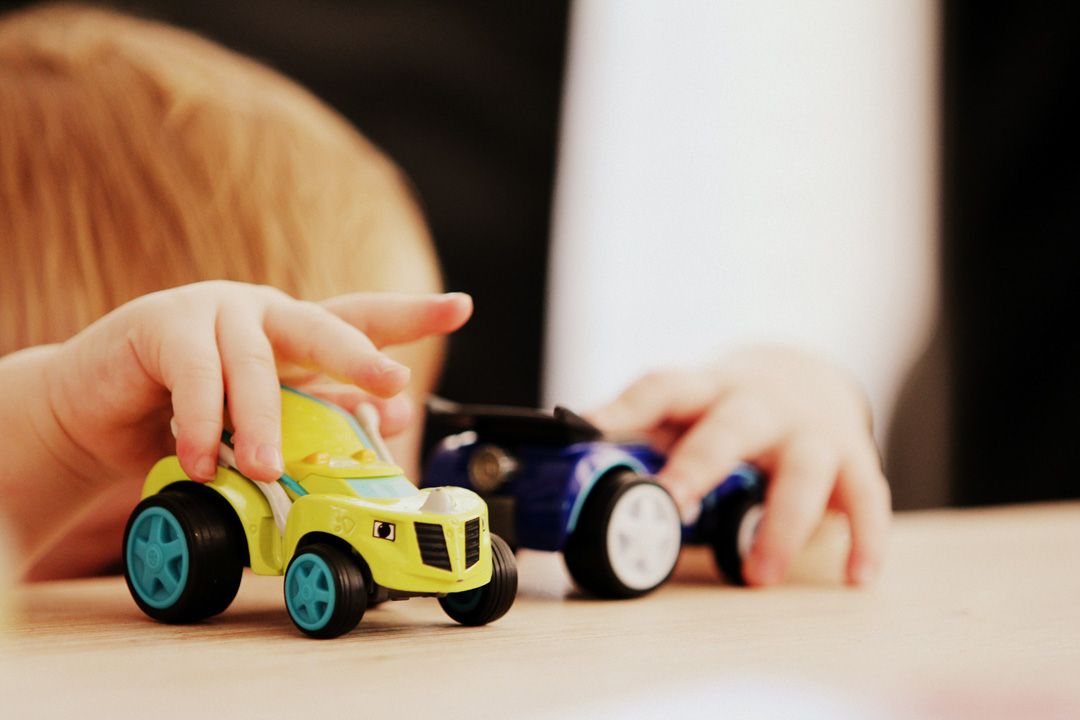Educator’s who know the secret of Schemas are on to something big. They can observe a child at play and notice a pattern where others may just see the behaviour (behaviour that on the surface, ermmm, may not always be great). Because these knowledgable Educator’s can recognise certain patterns, they’re then able to see opportunities for developmental growth that may otherwise be overlooked. They understand that by offering particular resources, or organising specific activities, they’re able to nourish these behaviour patterns and help a child really excel. In this article we’ll:
- Examine “Schemas” (or behaviour patterns) in children
- Explore what these patterns might mean
- Suggest resources and activities that complement the pattern
Why oh Why?
Why do children do things? Have you ever seen a child create a beautiful artwork, then undo all their hard work it by scribbling all over it? Ever given a child a gift, then notice they’re clearly more fascinated by the box or wrapping than the present itself?
Patterns of repeatable behaviour can be recognised in children’s play and are called Schemas. They can provide an explanation for confused Educators. Why does that child continually line the toys up? Why do they trash every tower of blocks they painstakingly built? Knowledge of schemas is helpful when a child in your care becomes fixated on something. A little understanding can help you feel less frustrated when you know there’s a reason behind the action.
Throughout early childhood, children enter in and out of behaviour patterns as they continue to grow and develop, schemas are how children organise and make sense of their world. By recognising patterns of behaviour in children, Educators can plan experiences to support a child’s interests and learning. The best part is, the resources and activities are often simple.
Here’s a run-down of different Schemas children in your care may experience:
The Transporting Schema
A natural urge to move things from one place to another.
Children will be fascinated with moving objects – and themselves – from place to place in this behaviour pattern. They might enjoy moving items from one area to another, perhaps they also like the movement of their own bodies.
You may see the pushing and pulling of objects, carrying resources from one spot to another in jars, buckets or bowls. Pushing themselves or their friends around in ride-on vehicles, prams, or similar.
If a child displays an interest in the Transporting schema:
Support children with this schema by:
- Providing opportunities to carry items from A to B. For example, a selection of buckets, bags, trailers, wheelbarrows, bikes, backpacks, dump trucks and push toys to fill and transport a variety of items.
- Provide an array of blocks, loose parts like colourful glass beads and paddle pop sticks. Natural resources, like pebbles & twigs, that your child can transport using their chosen mode.
- Use pasta, rice, and lentils for messy play activities, with jars or containers to transport them.
- Offer waterplay with a variety of containers, jugs, etc, to move the water from one container to another.

The Enveloping Schema
Children are learning about space and capacity.
In this behaviour pattern, children often enjoy being enclosed, climbing into small spaces such as boxes, drawers or cubby houses. They may enjoy draping sheets over themselves, or wrapping themselves up in things like blankets, or wrapping their toys up instead. Peek-a-boo is a classic example of Enveloping, which starts with younger babies.
If a child displays an interest in the Enveloping schema:
Provide your child with:
- Boxes of various sizes to play with:
Large boxes, for them to climb and hide inside.
Medium boxes to sit in – perhaps with a selection of “ stuffed friends”. Smaller boxes where objects can be placed, stored and retrieved.
- Offer opportunities for children to build cubby houses or hideaways underneath tables and chairs – with blankets or rugs.
- Have a variety of textiles on hand in a selection of sizes. Things like scarves, play silks, or baby swaddles, which they may choose to wrap themselves up in or play peek-a-boo games with.
- Include things like envelopes and pieces of paper to use in smaller boxes as mail, tickets, money, etc
- Supply a selection of imaginative play items, such as clothing, hats and accessories for dressing-up and layering. Enjoyment can even come from wrapping small objects up in paper, pieces of material, plant leaves or similar. Include items like tape or rope to assist this.
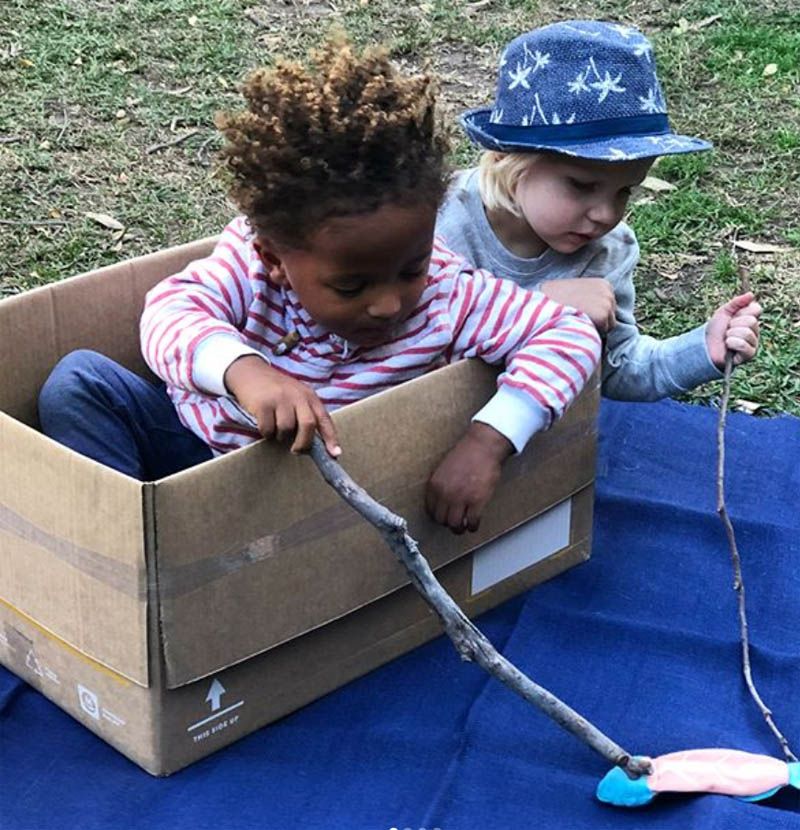
The Connecting Schema
Children are exploring how things join together and separate.
Children in this behaviour pattern are fascinated by joining or linking objects together, constructing things, or destructing things. Examples of this may include, lining up toys or household items in a row. Taking lids on and off jars, containers, lunch boxes, and anything else available to them.
Your child might explore how objects connect together, such as train tracks, Lego, blocks, or magnetic tiles. They may love wrapping string or tape around various objects, or they may experiment and find ways to connect items together, like sticks or other found objects, making “inventions”.
Unfortunately, an interest in this particular schema can also mean the same level of interest in taking the same resources apart. This can be viewed as destructive – such as knocking over towers of building blocks that other children have painstakingly created.
If a child displays an interest in Connecting schema:
For children in this schema, provide:
- Creative activities such as sticking, weaving or wrapping.
- Make necklaces with macaroni and string, or arm your child with craft items like sticky tape, string, boxes or card, to stick together.
- Supply items that can flow through other objects. For example, sand or water poured through tubes that have been connected together. PVC tubing is great for pouring both sand and water through (along with many other things!). It’s available at hardware stores and is fairly inexpensive.
- ‘Loose part’ objects that are found around the house or garden may seem like rubbish to an adult but can be a child’s most treasured resource. Anything. From sticks to a garden hose nozzle, or even an empty milk crate, can all be seen as valuable to a child. Add some string, rope, or tape to attach the selected items together – or pull them apart – at their discretion.
- You could also supply a variety of objects such as cars, clothes pegs or building blocks to line up.

The Trajectory Schema
Children are interested in how things move and respond.
Children fascinated with this behaviour pattern will enjoy the movement of objects, or themselves, in vertical, horizontal or diagonal directions. Throwing and dropping is a common movement, and they may become excited watching objects fall from their highchair (sometimes over and over!).
Children may climb, then jump from, your lounge, the chairs, or your dining table. They might enjoy watching machinery that moves, like cars, fans or washing machines. They’ll likely be fascinated with running water, and want to investigate it. The simple enjoyment of seeing objects moving.
If a child displays an interest in Trajectory schema:
Offer children in this behaviour pattern time each day with lots of space and areas that they can experiment with heights and climbing. Ideally this would be a local park or grassy reserve…. but if your service doesn’t go on excursions, other things you could do include:
- Allow children to climb a small ramp, the steps, or the slide.
- Make some woollen pom-poms or small hand-held bean bags to be used to throw inside. Rice inside a deflated balloon is a simple version of a bean bag.
- Go outside and throw balls or sticks, suggest races like sprinting, bunny hopping to see how fast they can go, or set-up a simple gross-motor course with opportunities for jumping.
- Make paper aeroplanes and race them, or make ramps using blocks – or anything you can place on a diagonal – to race cars down.
- Provide funnels for water to flow through, allowing children to enjoy the sensation and force of running water.
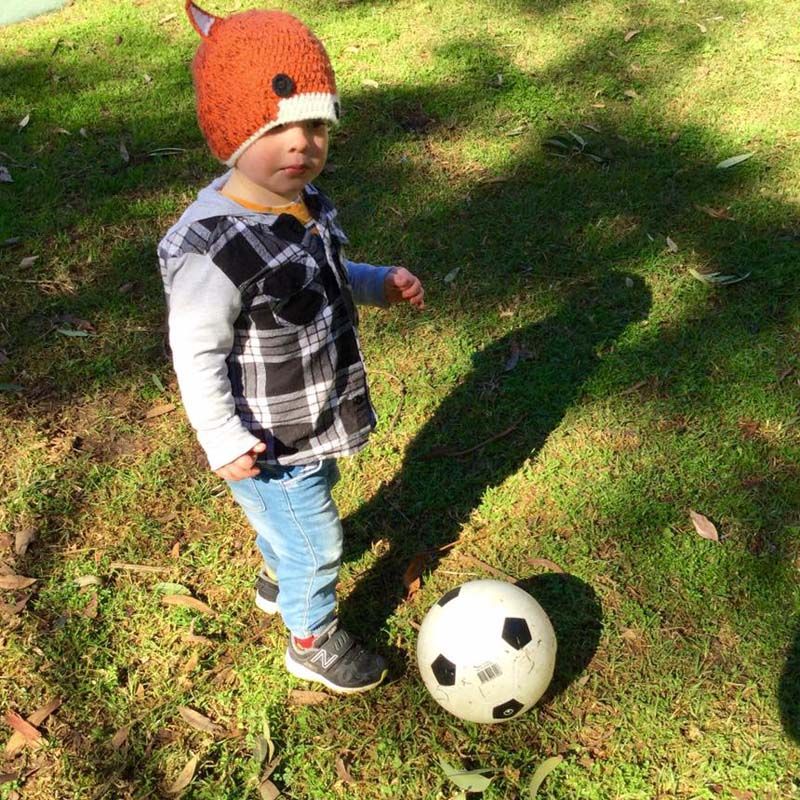
The Rotational Schema
Children show fascination with things that rotate.
When in this behaviour pattern, children relish everything that winds or unwinds. A child interested in Rotation may enjoy exploring everything that turns, including their own bodies. You may see children rolling across the floor, or down hills. Running in circles, twirling around until they fall over. They have a fascination with wheels, so are often turning door handles and taps, spinning wheels.
If a child displays an interest in Rotation schema:
- Provide a variety of toys that have wheels, like trolleys, bikes, scooters, diggers, lawnmowers, etc. Smaller vehicles to push and play with, and larger vehicles to ride on.
- Use water toys that spin around, like water cogs, or similar toys for a water play trough.
- It could be as simple as watching the washing machine spinning endlessly (if your service has a machine), or allowing children to turn the taps on and off under your supervision.
- Cooking activities are great as they offer opportunities for stirring, whisking, mixing, blending, rolling.
- Dancing with ribbons and scarves allows big twirling movements and lots of fun spinning action.
- Busy boards that have dials and knobs which turn, spinning tops, kaleidoscopes and hoola hoops.
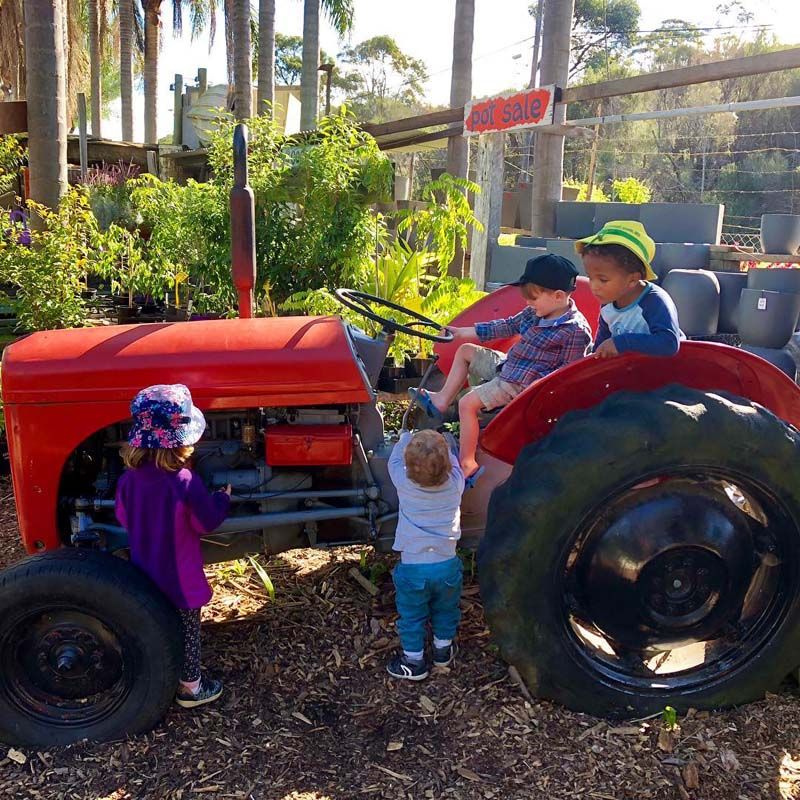
The Positioning Schema
Children will be interested in placing objects in lines, positions or rows.
Children in a positioning behaviour pattern are focused on the way things look and feel as they’re positioned in different ways. They’re experimenting with order – placing toys or objects in lines, or in specific places. They may spend time arranging their things in a certain way, which might mean they refuse to complete a task or leave the house without their items “perfect”. Perhaps you’ve noticed that the food on a certain child’s plate must be in specific places, not mixed together or touching?
If a child displays an interest in Positioning schema:
- Use the tin cans in your pantry for your child to stack on top of one another.
- Offer threading activities, like some shoelaces and a selection of wooden beads with holes through the centre. If your child is a little older cut out a basic shape from cardboard, like a circle or heart. Use a hole punch to punch holes evenly around the edge, and provide some colourful wool to thread through the holes (*tip – tape the edge of the wool to prevent fraying).
- Supply loose parts like coloured beads that can be sorted into different colours, or seashells, gems & gumnuts that can be placed in rows or lines.
- Collect some objects, like pebbles or stones of various sizes, that can be ordered into size categories – large, medium, small.
- The versatility of building blocks is always great for stacking, lining-up or sorting.
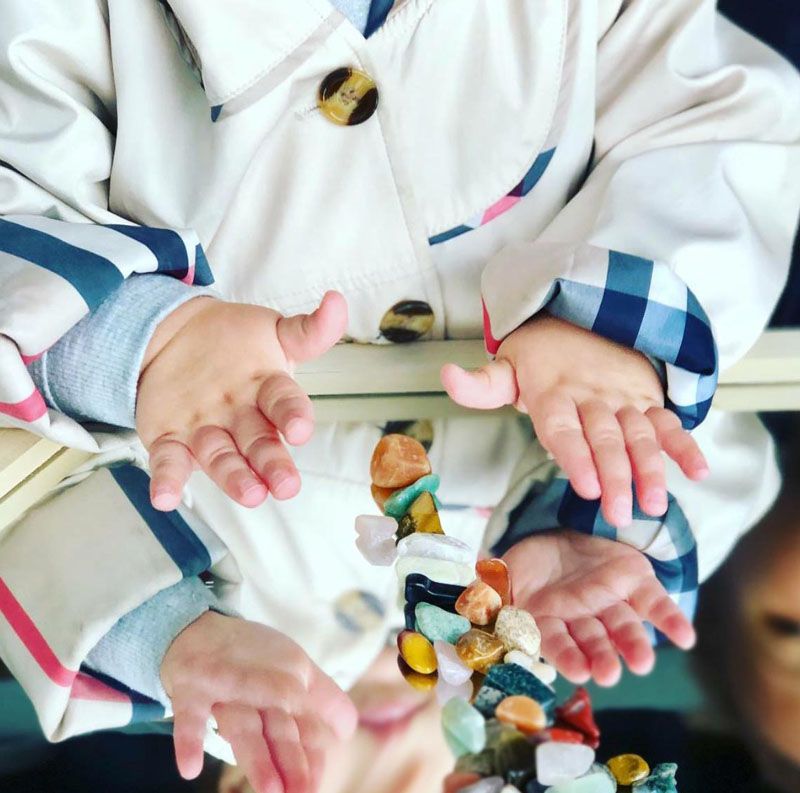
The Orientation Schema
All about experiencing our world from all angles and varying points of view.
Everyone has at one point been through the orientation behaviour pattern. Adults basically all know how it feels to hang upside down from a set of monkey bars. While some people never outgrow this urge – those that enjoy things like hang gliding – most of us remember the feeling and don’t need to practice it. You’ll know a child is in this pattern if they’re tunnelling underneath the table one minute, and then climbing on top of it the next.
If a child displays an interest in Orientation schema:
This behaviour pattern requires limited resources but instead involves getting out to the park, using climbing frames, doing simple yoga moves – allowing your child to experience the world from different angles – safely.
Let children climb, supervised, on furniture of different heights and levels, dangle off a lounge with a pillow underneath, or hang upside down, supervised, from the lower branches of a tree! (risky play concepts creeping in!!)
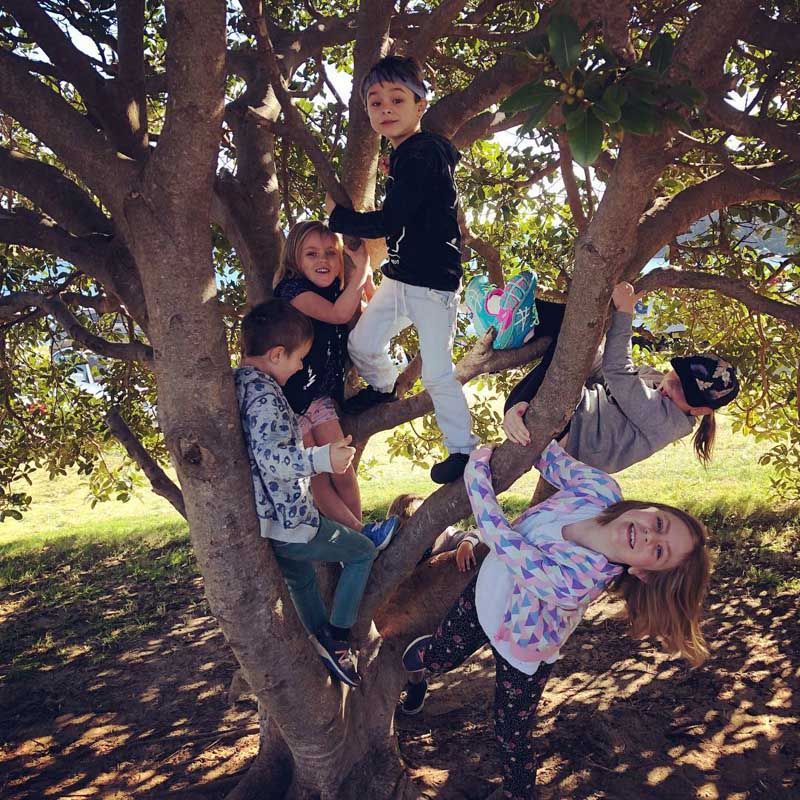
The Containment / Enclosure Schema
Children are learning about placing objects within objects and looking at volume and capacity.
A physical behaviour pattern where children are focused on learning about containing or enclosing themselves within different sized spaces. This is displayed if your child demonstrates the urge to fill up cups with water, is often found climbing into cardboard boxes or kitchen draws, building fences for the animals or is seen putting all the animals inside the circular train track.
If a child displays an interest in Containment/Enclosing schema:
Support children with this schema by offering a selection loose parts, for example:
- Baby food or squeezy yoghurt lids (the ones that have built-in spaces to avoid choking hazards), pebbles or glass beads for children who aren’t tempted to pop smaller items into their mouths. Pegs, wooden tree slices, etc.
- Provide shape-sorters. Tupperware’s red and blue version has been popular for decades, but many clever options are on the market.
- Include a tee-pee with a selection of pillows to place in and out, or a tunnel to climb through.
- Allow access to containers, jars, saucepans & pots. Any container that can be fit inside another container.
- To the containers, you can add pasta, rice, or sand for messy play activities where your child can to tip from one space to another
- Offer jugs or measuring cups to pour water during water play.
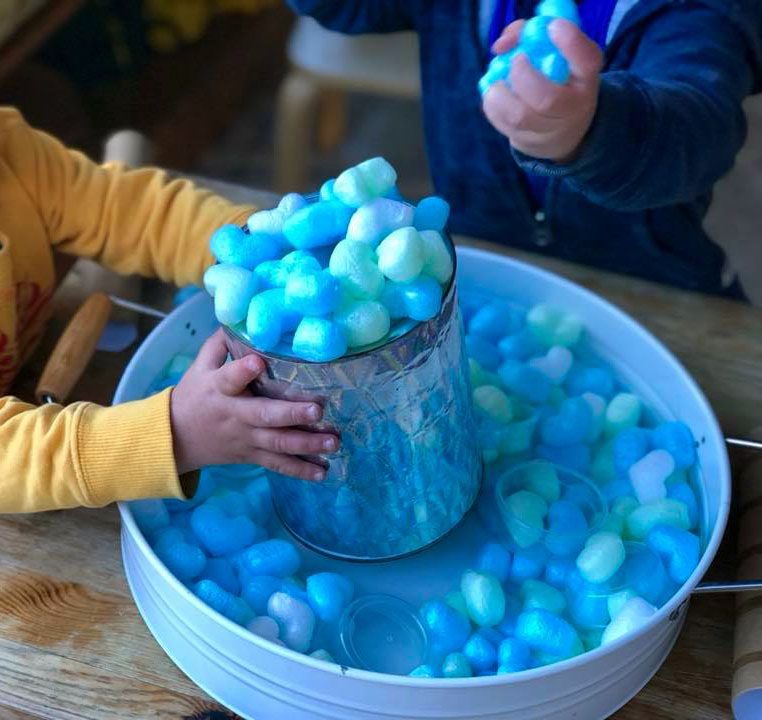
The Transforming Schema
Children are learning about cause and effect.
Children that enjoy this behaviour pattern love seeing how things change. They’re enjoying science.
A child may delight in seeing what substances can do to one another… mixing their juice with their pie on their lunch tray, watching ice melt in a glass, seeing rain trickle down a window. Anything that causes a reaction to happen will be of excitement and fascination. The Transforming urge can come in many forms; holding all your food in your mouth for a long time to see what it turns into, water with dirt, or helping Granny with mixing the bread dough.
If a child displays an interest in Transforming schema:
To support this behaviour pattern in your child, provide things like STEM / science experiments, or cooking activities involving blending and mixing ingredients. Examples include,
- Erupting volcanoes – which involve bicarb with vinegar poured on top
- Fizzing eggs – freeze chunks of ice (a deflated balloon will provide the egg shape). Add some dinosaurs or toy animals inside for effect, then melt the ice using squeezy sauce bottles filled with warm water and vinegar.
- Milk with food colouring – See the colour changing, and then “paint” with it. Blend smoothies, Baking a cake, Make play-dough.
- Allow children to enjoy the outdoors. Getting wet in the rain, make mud pies.
- Subscription science kits that arrive on a regular basis (monthly?) are great as your child grows older.
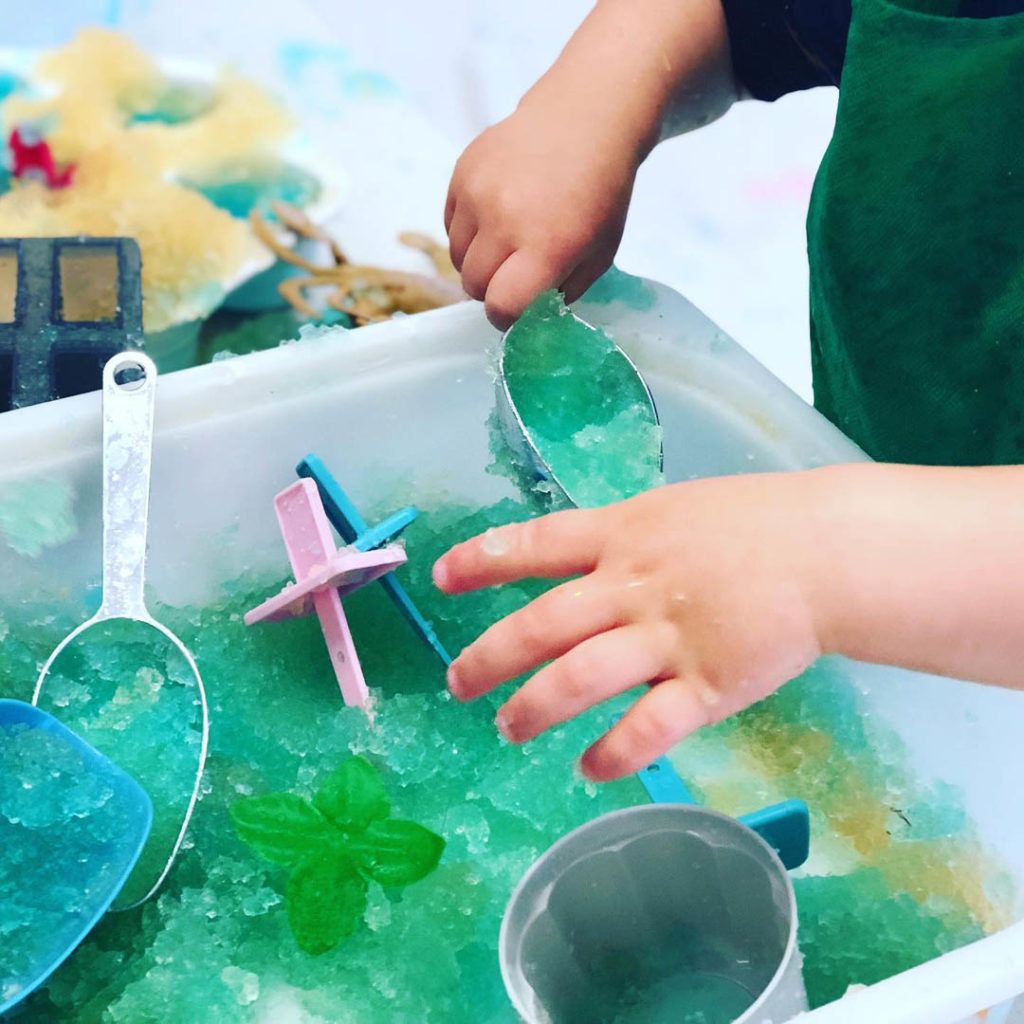
Will Children Outgrow – or Go Between – Different Schemas?
Throughout early childhood, children enter in and out of behaviour patterns as they continue to grow and develop. It’s therefore important for Educators to understand the concept of these developmental “urges”, so you know which kind of toys, objects and resources to offer at any given time. Encourage the natural course of exploration and learning. Behaviour that may have traditionally been seen as inappropriate (such as throwing objects indoors), has an entirely new perspective once you understand the reasoning behind it.
Recognising a child’s developmental “urge” means you can redirect it if need be. A child will be just as happy throwing a ball outside where it’s safe. It’s the urge, not the action, so if the action is dangerous or not appropriate then simply find a more suitable outlet. Therefore still fulfilling the urge in an acceptable way.
Armed with this knowledge, be confident that you’ll be able to recognise and provide the best opportunities for a child’s development, and offer them the best tools available to you… even if that’s just a selection of pots and pans from your kitchen cupboard!
If you’d like further information on Schemas, The Hidden Gem, an Educator and a mum, really breaks down the concept on her YouTube channel. Some of the questions raised by others may even be applicable for you!
Oh, and Kinderloop’s incredible new ‘Community Walls’ feature has a wall dedicated to Schemas. Access it, and other great, inspirational walls via the web browser login of Kinderloop (*Admin users can create walls & invite colleagues to view and collaborate!). Look for the ‘world globe’ icon in the menu along the top to access Community Walls!

Happy Kinderlooping!
Follow along on our social pages to ensure you don’t miss out on all of the Kinderloop tips & hints, and learn about our new features!
Facebook
Instagram
